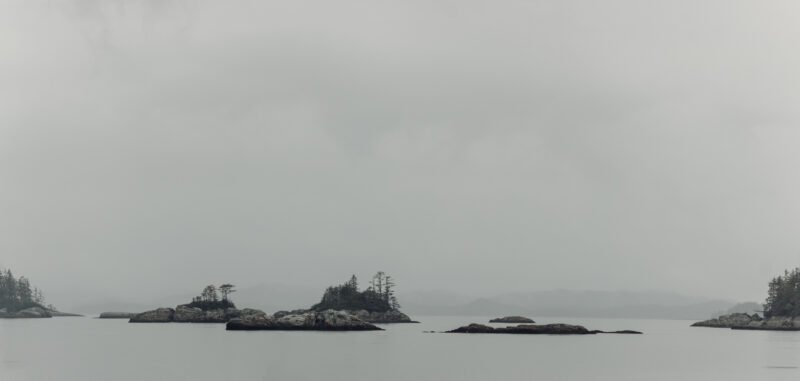[ad_1]
.
In late 2021, the Mamalilikulla First Nation unilaterally declared protection under indigenous law for 10,416 hectares of land and sea north of Vancouver Island off the coast of British Columbia. The nation, eager to reconnect with the traditional territory from which it had been forcibly separated, established the Indigenous Conservation and Conservation Area without the provincial or federal government.
Now Ottawa officially recognizes the marine portion of the Mamalilikulla Conservation Area, and Canadian Fisheries and Oceans Minister Joyce Murray announced on Sunday that the delicate ecosystem, rich in rare shallow-water corals and sponges, will be given “long-term” protection.
The creation of the Gwaxdlala/Nalaxdlala Marine Protected Area, an area also known as Lull Bay and Hoeya Sound in Knight Inlet, comes as officials and experts from around the world convened in Vancouver for an international forum on marine protected areas.
Mamalilikulla Chief Councilor Winidi John Powell said the announcement would bring good luck to his ancestors.
Chief John Powell of the Mamalilikulla First Nation said the establishment of their sanctuary is “only the beginning” of reclaiming the stewardship of their territory. Photo: Taylor Roades / The Narwhal
More than a century ago, the federal government forced the Mamalilikulla Indians from their central villages, leaving generations separated from their lands. The Gwaxdlala/Nalaxdlala Indigenous Conservation and Conservation Area aims not only to protect Mamalilikulla territory, but also to help restore the community’s connection to their homeland.
During Sunday’s announcement, Powell recalled a powerful gathering nine months ago when Mamalilikulla members, chiefs of neighboring nations and guests traveled to Gwaxdlala and Nalaxdlala “to symbolize our commitment and our community members reconnecting with this significant area in Mamalilikulla territory.” connect to”.
“As we celebrated in the pouring rain, it was said that it had been over 100 years since the Mamalilikulla people had danced, sung our songs and drummed on this land,” he said. “I think that the rains there were the tears of our ancestors; I think they would all be happy to see what we’re doing here today.”
Fisheries Secretary Murray highlighted the rich marine biodiversity of the area, of which 2,000 hectares are now protected federally.
“Over 240 marine species are found in this region, which has been identified as a globally unique ecosystem of fragile and slow-growing corals and sponges,” Murray said.
BC Minister of Water, Land and Resources Nathan Cullen acknowledged that protecting the Gwaxdlala/Nalaxdlala marine reserve has been a long time coming for the Mamalilikulla First Nation.
“This is more than a century in the making and recognition of rights that have always been there but have been ignored for so long by the province and our federal colleagues,” he said.
“The province is committed to ensuring that the nation’s vision for this marine sanctuary is implemented in a manner that respects the interests of everyone in the region,” he added.
The Mamalilikulla Protected Area encompasses 2,000 hectares of ocean in Knight Inlet which is now federally protected as the Gwaxdlala/Nalaxdlala Marine Protected Area. Card: Shawn Parkinson / The Narwhal
New marine reserve complements Canada’s conservation goals
According to the Fisheries Act, the marine reserve is considered a so-called area-based fisheries closure, meaning no fishing is allowed within its boundaries. Salmon, rock fish, crab and shrimp can all be found in the area.
“The goal is that the rearing effect of protection actually increases abundance outside of the marine reserve, thereby preserving fishing opportunities for decades to come,” Murray said.
According to the federal government, marine protected areas can count toward Canada’s international goal of conserving 30 percent of land and water by 2030. This goal is considered the bare minimum of what is needed to halt global biodiversity loss and maintain vital ecosystem services. such as natural water filtration through wetlands or carbon storage in oceans and forests.
Canada has so far protected almost 14 percent of its marine areas.
Murray acknowledged that the Gwaxdlala/Nalaxdlala Marine Protected Area represents a relatively small contribution to Canada’s conservation goals, but said, “We cannot overstate the value of preserving and protecting this priceless area.”
The Mamalilikulla territory is home to rare shallow coral and sea sponges, but these delicate creatures are very sensitive to shrimp traps. Photos: Taylor Roades / The Narwhal
Unique features of the Gwaxdlala/Nalaxdlala Marine Reserve include gorgonian corals typically found in deeper waters. These soft, colorful corals can resemble dense underwater shrubs or delicate fans. In addition to seagrass meadows and kelp forests, the corals provide shelter for fish and other sea creatures.
Powell noted that when the Mamalilikulla declared the Indigenous Conservation Area, they made an urgent call to protect the Hoeya Head Sill corals, which are now protected in the new marine conservation area. The Hoeya Head Sill is a uniquely biodiverse underwater environment where fresh surface and deep waters mix to create a home for more than 46 different species of coral, sponges and anemones. He asked that they be protected “in accordance with the Law of Aweenak’ola, which requires us to care for all living things in the sea, sky and land as if they were our brothers and sisters.”
Gwaxdlala/Nalaxdlala is the first marine reserve established under the Northern Shelf Bioregion Action Plan
Gwaxdlala/Nalaxdlala is the first marine protected area to be recognized under the planning process of the North Shelf Bioregion Network for Marine Protected Areas.
Earlier Sunday, 15 Coastal First Nations and the British Columbia and federal governments approved the Marine Protected Area Network’s action plan for the Northern Shelf Bioregion after years of negotiations.
The Northern Shelf Bioregion, which Murray described as “an extremely unique area on our planet,” extends north from the Campbell River to the BC-Alaska border.
Gwaxdlala/Nalaxdlala is the first marine protected area to be recognized as part of the Northern Shelf Bioregion Marine Protected Area Network planning process. The proposed network could protect more than three million hectares – about 30 percent of the Northern Shelf bioregion – through new and existing protected areas. Photo: Taylor Roades / The Narwhal
According to a federal government background document, the action plan offers a “planned approach to the creation of new protected areas in the [Northern Shelf bioregion]’ and supports efforts to reach the 30 by 30 goal.
The proposed network of marine protected areas would cover more than three million hectares – about 30 percent – of the North Shelf Bioregion through new and existing protected areas. Between 20 and 50 percent of protected areas would have a high level of protection, meaning fishing and industrial activities would be banned, while the remaining areas would allow some human use.
The 15 First Nations, federal and provincial governments will collectively manage and connect the marine protected areas and work to develop a lasting funding source that brings together public, private and philanthropic funds.
With files by Stephanie Wood.
Banner: The Mamalilikulla Conservation Area covers 2,000 hectares of ocean in Knight Inlet where rare flat corals live beneath the surface.
Photo: Taylor Roades / The Narwhal
[ad_2]
Don’t miss interesting posts on Famousbio










